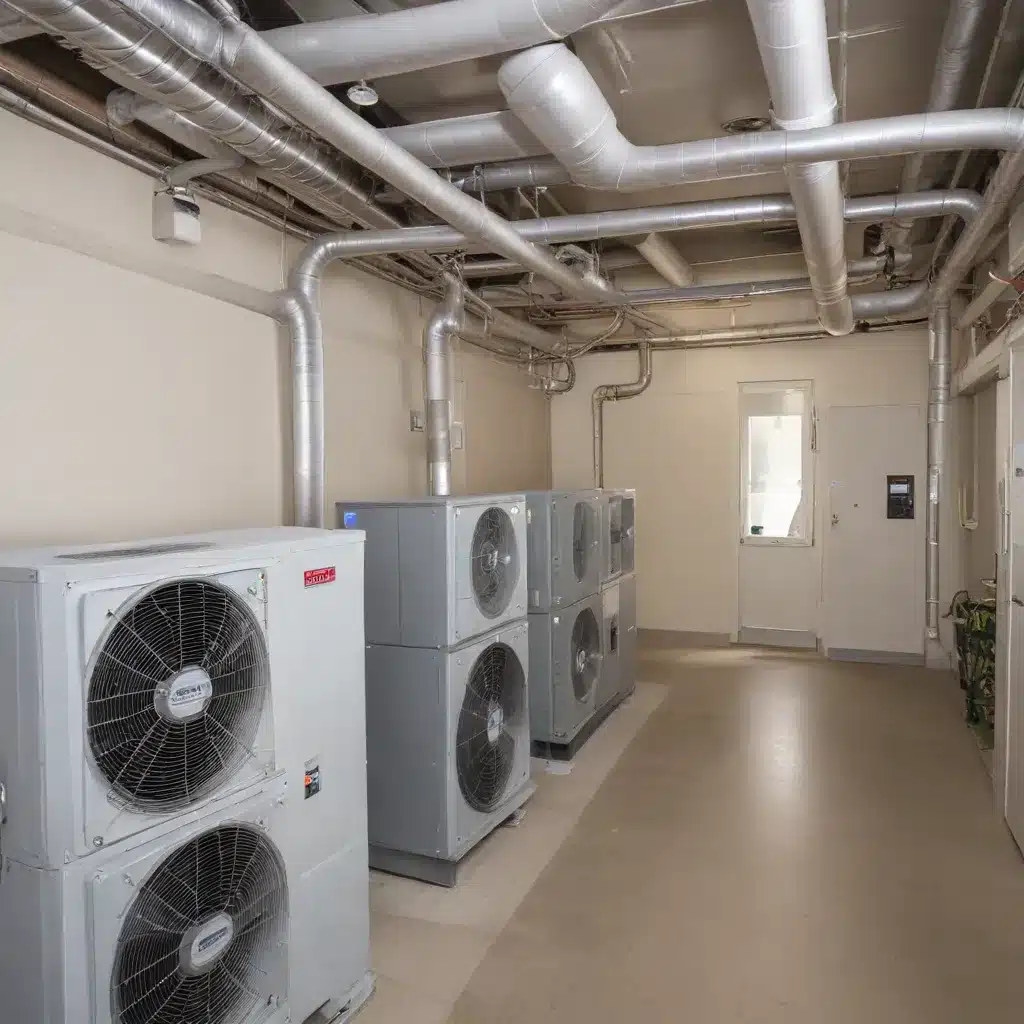
As an experienced air conditioning specialist, I’ve had the privilege of working with a wide range of clients, from homeowners looking to optimize their climate control to business owners seeking energy-efficient solutions for their commercial spaces. One of the most transformative technologies I’ve encountered in recent years is the implementation of zoned HVAC systems. These advanced systems have the power to revolutionize the way we approach heating, cooling, and ventilation, delivering unparalleled comfort and flexibility.
Understanding the Fundamentals of Zoned HVAC Systems
At the core of a zoned HVAC system is the ability to divide a building into distinct climate-controlled zones. Unlike traditional one-size-fits-all systems, zoned configurations allow for independent temperature regulation in different areas of a home or commercial space. This means that you can set the ideal temperature for your living room, while keeping the bedrooms at a comfortable but slightly cooler setting, all without sacrificing energy efficiency.
The key components that enable this level of customization are smart thermostats, motorized dampers, and a central control panel. The thermostats monitor the temperature in each zone and communicate with the dampers, which open and close to direct the flow of conditioned air where it’s needed most. The control panel oversees the entire system, ensuring seamless coordination and optimal performance.
But the true beauty of zoned HVAC systems lies in their adaptability. As the needs of a space evolve, the zoning configuration can be easily adjusted to accommodate changes in occupancy, usage patterns, or specific thermal requirements. This flexibility is particularly valuable in commercial settings, where the layout and purpose of a building may undergo frequent transformations.
The Benefits of Zoned HVAC: Comfort, Efficiency, and Cost Savings
One of the most compelling advantages of zoned HVAC systems is the enhanced comfort they provide. By allowing for personalized temperature control in different areas, these systems cater to the unique preferences of each occupant. No more constant battles over the thermostat – with zoning, everyone can enjoy their ideal climate.
But the benefits extend far beyond just comfort. Zoned HVAC systems also deliver significant energy savings, as they allow you to only heat or cool the spaces that are in use, rather than the entire building. This targeted approach to climate control not only reduces utility bills but also extends the lifespan of your HVAC equipment by minimizing unnecessary strain.
Let’s consider a real-world example: imagine a large family home with an open-concept layout. During the day, the living room and kitchen are bustling with activity, while the bedrooms remain largely unoccupied. With a traditional HVAC system, the entire home would be heated or cooled uniformly, regardless of usage patterns. In contrast, a zoned system would direct conditioned air primarily to the active living areas, cutting down on energy waste and keeping utility costs in check.
Designing an Effective Zoned HVAC System
Implementing a successful zoned HVAC system requires careful planning and consideration of your specific building’s layout and thermal needs. The first step is to conduct a thorough assessment, identifying the distinct zones within your home or commercial space. This involves evaluating factors such as room usage, insulation levels, sun exposure, and any unique architectural features that may impact heat distribution.
Once the zoning plan is established, the next consideration is selecting the right equipment. This includes choosing the appropriate size and capacity of HVAC units, as well as ensuring compatibility with zoning controls and dampers. Proper ductwork design and airflow management are also crucial for maintaining a balanced system and avoiding pressure imbalances.
Working closely with a reputable HVAC professional is essential in this process. These experts can provide invaluable guidance, drawing on their experience to recommend the most efficient and effective zoning configuration for your specific needs. They can also handle the complex installation process, ensuring a seamless transition to your new zoned HVAC system.
Optimizing Your Zoned HVAC System for Maximum Efficiency
To truly unlock the full potential of your zoned HVAC system, it’s important to adopt best practices for system operation and maintenance. This includes regularly scheduled tune-ups and inspections to maintain optimal performance, as well as educating yourself and your family or staff on the proper use of the zoning controls.
One key strategy for maximizing energy efficiency is to group together areas with similar usage patterns or temperature requirements into a single zone. This allows you to fine-tune the heating and cooling in those areas, minimizing energy waste. Additionally, incorporating smart technology like occupancy sensors can further enhance your zoned system’s efficiency by automatically adjusting temperatures based on real-time occupancy data.
Regular ductwork maintenance and sealing are also crucial for maintaining the integrity of your zoned HVAC system. Leaks and air infiltration can undermine the targeted airflow distribution, compromising both comfort and efficiency. By addressing these issues proactively, you can ensure your zoned system continues to deliver the outstanding performance you expect.
Embracing the Future of Climate Control
As an air conditioning specialist, I’ve witnessed the remarkable evolution of HVAC technologies, and zoned systems stand at the forefront of this transformation. By empowering homeowners and business owners to take control of their indoor climate, these advanced systems represent a quantum leap in comfort, efficiency, and customization.
Whether you’re looking to upgrade an existing HVAC setup or designing a new climate control solution for your property, I encourage you to explore the possibilities of zoned HVAC. By partnering with a reputable, experienced Hamilton Air Conditioning team, you can unlock a world of personalized comfort and energy savings, tailored to the unique needs of your space.
As we continue to navigate the ever-evolving landscape of HVAC technologies, one thing is clear: zoned systems are poised to redefine the way we think about heating, cooling, and ventilation. By embracing this innovative approach, you can not only enhance the comfort and efficiency of your living or working environment but also contribute to a more sustainable future.